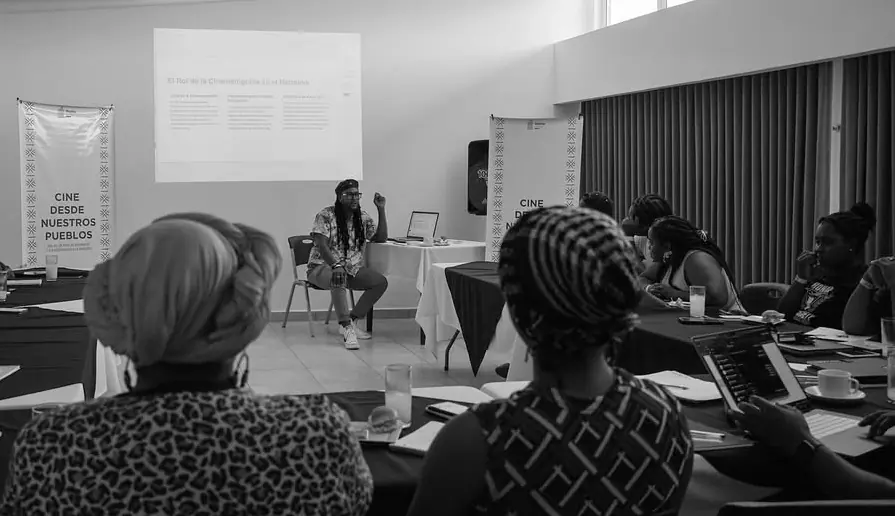Vincentian Filmmaker Served as Intl Tutor at Cine desde Nuestros Pueblos 2025 in Honduras
Returning to Honduras to once again contribute to Cine desde Nuestros Pueblos has been a profound and humbling experience. As a Vincentian filmmaker, being invited for a fourth time to collaborate on this initiative is both an honour and a responsibility. I carry with me not only the stories of my own people from St. Vincent and the Grenadines but also a deep commitment to strengthening the bonds across our shared Caribbean and Central American heritage—especially with the Garifuna community, whose legacy spans our shores and histories.
This year’s workshop, organized by William Reyes of OPIDA in partnership with the Instituto de Cine Honduras, was held in the beautiful coastal town of Tela, Atlántida. It brought together Indigenous Lenca, Miskito, and Garifuna youth and cultural workers, all eager to explore how film can become a tool of resistance, preservation, and expression. Witnessing their enthusiasm and creativity, I felt the power of cinema not just as entertainment, but as a vehicle for safeguarding identity.
There’s something powerful about teaching cinematic language to communities whose stories have historically been silenced. The camera becomes more than a lens—it becomes a mirror, a shield, and sometimes a weapon against cultural erasure. To equip these communities with the tools to tell their own stories is to contribute to the intergenerational transmission of knowledge, memory, and truth.
As a Vincentian working closely with the Garifuna people—descendants of the Black Caribs exiled from my homeland—it feels deeply personal. In many ways, these workshops are acts of reconnection. They are about healing old wounds, rekindling shared heritage, and imagining a future where we are united as one Kalinago-Garifuna-Vincentian nation.
During the workshop, I had the joy of reuniting with my dear friend and colleague, Eivis Caj, a Maya filmmaker from Guatemala. His presence reminded me of the rich diversity and interconnectedness of our Indigenous experiences across the Latin American and Caribbean region. Together, as tutors, we sought not to impose visions but to encourage local filmmakers to trust their own voices and perspectives.
Honduran society, like many in Central America, remains closer to its Indigenous roots in visible ways—through museums, public art, folklore souvenirs, and community celebrations. But beneath this surface lies an urgent reality. While Punta music has found its way into mainstream pop culture, within the Garifuna communities themselves, the soul of the tradition—its language, spirituality, and rituals—is under constant threat. The pressures of mining, monocrop farming, tourism, global capital, fast food franchises, and consumer culture are seductive forces, steadily replacing traditional ways of life.
And yet, cinema gives us an opportunity to slow things down. To observe. To reflect. To remember. Through film, we can archive what is slipping away, and perhaps even inspire younger generations to rediscover pride in what was once dismissed or forgotten. It is a slow resistance—but a powerful one.
In this spirit, I am always ready to answer the call. These workshops are not just projects—they are part of a lifelong commitment. I, too, am in the early stages of developing a film that will explore the Garifuna experience, interweaving it with Vincentian memory in the hopes of building a bridge between our communities. Through this work, I hope to help bring us closer—not just in narrative, but in heart and purpose.
So, to OPIDA, the Instituto de Cine Honduras, and all the passionate participants who shared space and vision with me—thank you. It is through these collaborations that we keep the fire burning.




